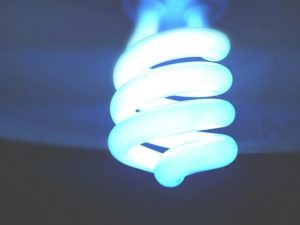
Improving Power Usage Effectiveness (PUE) in Data Centres: Proven Tips
In today’s hyper-connected digital economy, data centres are the beating heart of modern infrastructure. But with this power comes a cost—especially in terms of energy consumption. Improving Power Usage Effectiveness (PUE) is critical for enhancing energy efficiency, reducing operational expenses, and supporting sustainability goals.
Whether you operate a hyperscale facility or a mid-sized private server farm, this article offers actionable insights to optimise your PUE and future-proof your data centre operations.
What Is Power Usage Effectiveness (PUE)?
Power Usage Effectiveness (PUE) is a widely accepted metric that measures how efficiently a data centre uses energy. Specifically, it’s the ratio of total facility energy to the energy consumed solely by the IT equipment (servers, storage, and network gear).
📐 The Formula:
PUE = Total Facility Energy / IT Equipment Energy
A perfect PUE of 1.0 means all energy goes directly to IT operations, with no energy wasted on lighting, cooling, or power distribution. While that’s nearly impossible in practice, data centres strive for values close to this benchmark.
Why Power Usage Effectiveness (PUE) Is Critical for Data Centres
Understanding and improving your PUE can bring significant operational and environmental benefits:
- Cost Reduction: Lower PUE directly translates to decreased energy bills.
- Environmental Impact: Less energy waste = lower carbon footprint.
- Compliance & Reporting: ESG reporting standards often require energy efficiency metrics.
- Competitive Advantage: A lower PUE can be a powerful marketing differentiator.
Common Power Usage Effectiveness (PUE) Benchmarks by Facility Type
| Data Centre Type | Typical PUE |
|---|---|
| Traditional (legacy) | 1.8–2.5 |
| Modernised facilities | 1.4–1.8 |
| High-efficiency centres | 1.2–1.4 |
| Leading-edge designs (Tier IV) | <1.2 |
Strategies for Improving Power Usage Effectiveness (PUE)
1. 🔥 Improve Power Usage Effectiveness with Smarter Cooling
Cooling accounts for a major portion of non-IT energy use. Optimising it is the fastest way to improve PUE.
- Hot/Cold Aisle Containment: Segregates hot and cold airflow to prevent thermal mixing.
- Use Free Cooling: Leverage ambient air or water-side economisers to reduce mechanical cooling loads.
- Raise Inlet Temperatures: Modern servers tolerate higher temperatures—adjusting setpoints saves energy.
2. 📊 Monitor Energy in Real Time to Boost PUE
- Install Smart Meters & Sensors: Real-time insights help identify and fix inefficiencies instantly.
- Conduct Regular Energy Audits: Benchmark, measure, and verify energy consumption trends.
3. ⚙️ Infrastructure Upgrades That Improve Power Usage Effectiveness
- Deploy Energy-Efficient Servers: Newer hardware uses less power per compute unit.
- Modernise Power Distribution Units (PDUs): Reduce conversion losses and improve load balancing.
- Adopt Virtualisation: Consolidate workloads to use fewer servers more efficiently.
4. 👩🏫 Employee Awareness Can Improve Data Centre Efficiency
- Awareness Training: Educate staff about energy-saving habits.
- Feedback Channels: Empower teams to report anomalies or suggest improvements.
Power Usage Effectiveness in Action: Google’s PUE Success Story
Google reports an average PUE of 1.1 across its global data centres by aggressively optimising airflow, leveraging AI-based controls, and implementing predictive maintenance strategies. (Source: Google Sustainability){target="_blank"}
🌿 Sustainability Benefits of Better Power Usage Effectiveness (PUE)
Improving PUE doesn’t just save money—it supports global efforts to fight climate change. Whether complying with EU CSRD regulations or meeting Net Zero corporate goals, improving your data centre’s energy profile is the first step.
🔗 Internal Links
- 👉 Learn more about our Data Centre Commissioning (CxM) Services
- 👉 Explore CxA Commissioning for Mission-Critical Facilities
- 👉 Meet the Team Behind Sixfold Group
🌐 External Authoritative Links
🔗 Google Data Centre Sustainability
🔗 UK Energy Efficiency Legislation – GOV.UK
❓ FAQs About Power Usage Effectiveness (PUE)
What is a good PUE value for a data centre?
A PUE between 1.2 and 1.4 is considered excellent. The closer to 1.0, the more energy-efficient your facility is.
How often should I measure my data centre’s PUE?
Ideally, continuously via automated systems. At a minimum, conduct quarterly reviews to track progress and identify trends.
Does virtualisation help reduce PUE?
Yes. By consolidating workloads, you reduce the number of active servers, which decreases both power and cooling requirements.
Can AI be used to improve PUE?
Absolutely. AI-driven management platforms can dynamically adjust cooling and power usage based on real-time demand.
Is PUE the only metric that matters?
No. PUE is a great starting point, but Water Usage Effectiveness (WUE) and Carbon Usage Effectiveness (CUE) provide a more comprehensive sustainability perspective.
📌 Final Thoughts on Improving Power Usage Effectiveness (PUE)
Improving Power Usage Effectiveness (PUE) is more than a performance metric—it’s a strategic imperative. From smarter cooling to cutting-edge monitoring and infrastructure upgrades, there are countless ways to enhance your data centre’s energy profile.
📣 Call to Action
Want to optimise your data centre’s PUE?
👉 Contact Sixfold Group for expert Data Centre Commissioning solutions tailored to your energy goals.

